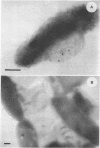Abstract
To investigate the chemical mechanism of silicate binding to the surface of Bacillus subtilis, we chemically modified cell wall carboxylates to reverse their charge by the addition of an ethylenediamine ligand. For up to 9 weeks, mixtures of Si, Al-Fe-Si, and Al-Fe-Si plus toxic heavy metals were reacted with these cells for comparison with control cells and abiotic solutions. In general, more Si and less metal were bound to the chemically modified surfaces, thereby showing the importance of an electropositive charge in cell walls for fine-grain silicate mineral development. The predominant reaction for this development was the initial silicate-to-amine complexation in the peptidoglycan of ethylenediamine-modified and control cell walls, although metal ion bridging between electronegative sites and silicate had an additive effect. The binding of silicate to these bacterial surfaces can thus be described as outer sphere complex formation because it occurs through electrostatic interaction.
Full text
PDF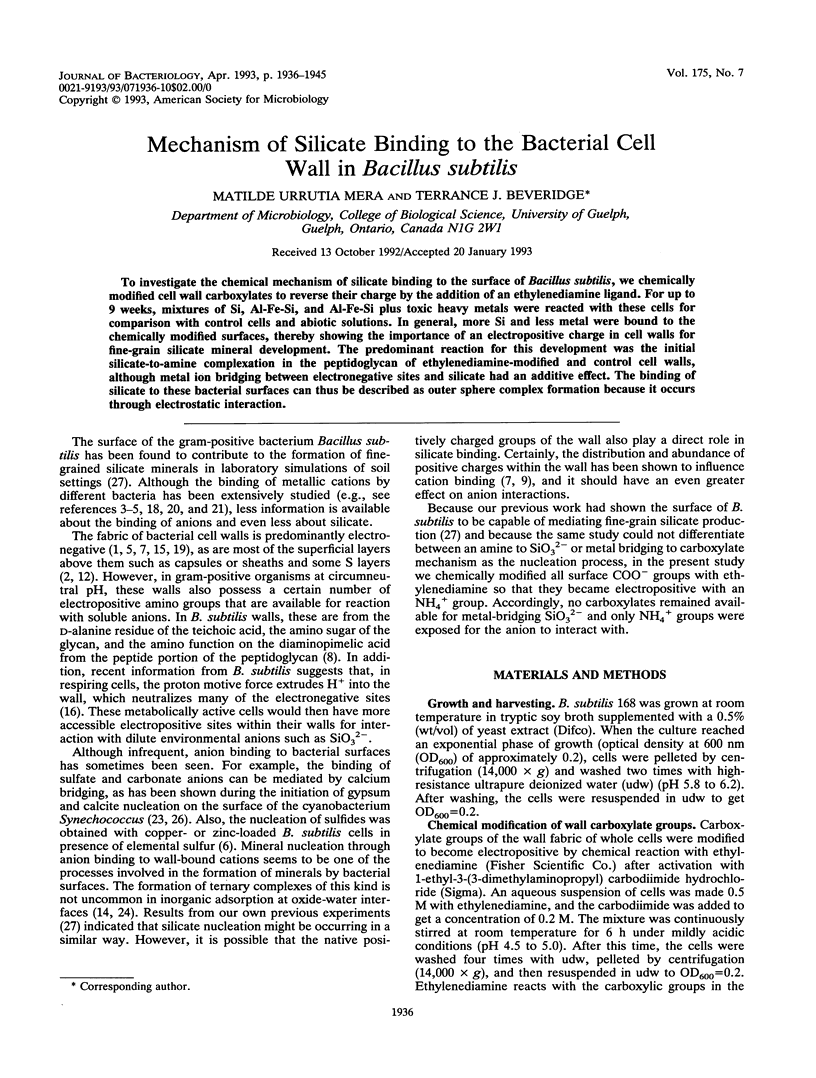
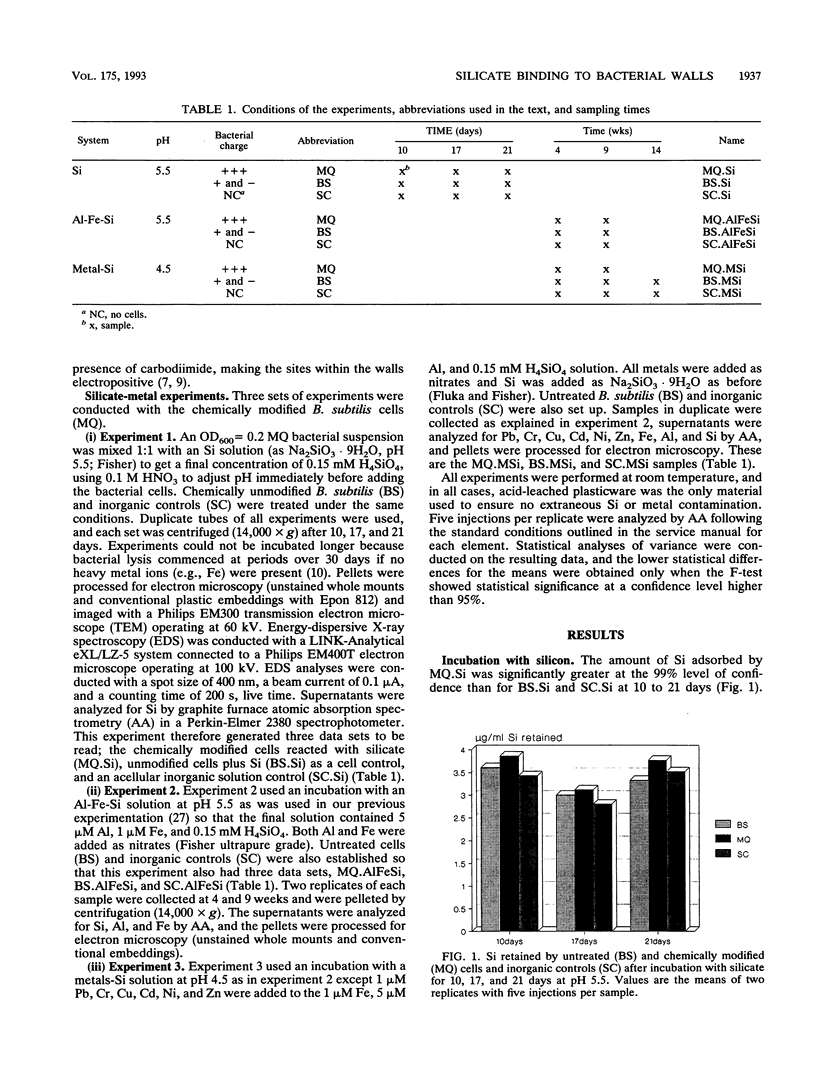
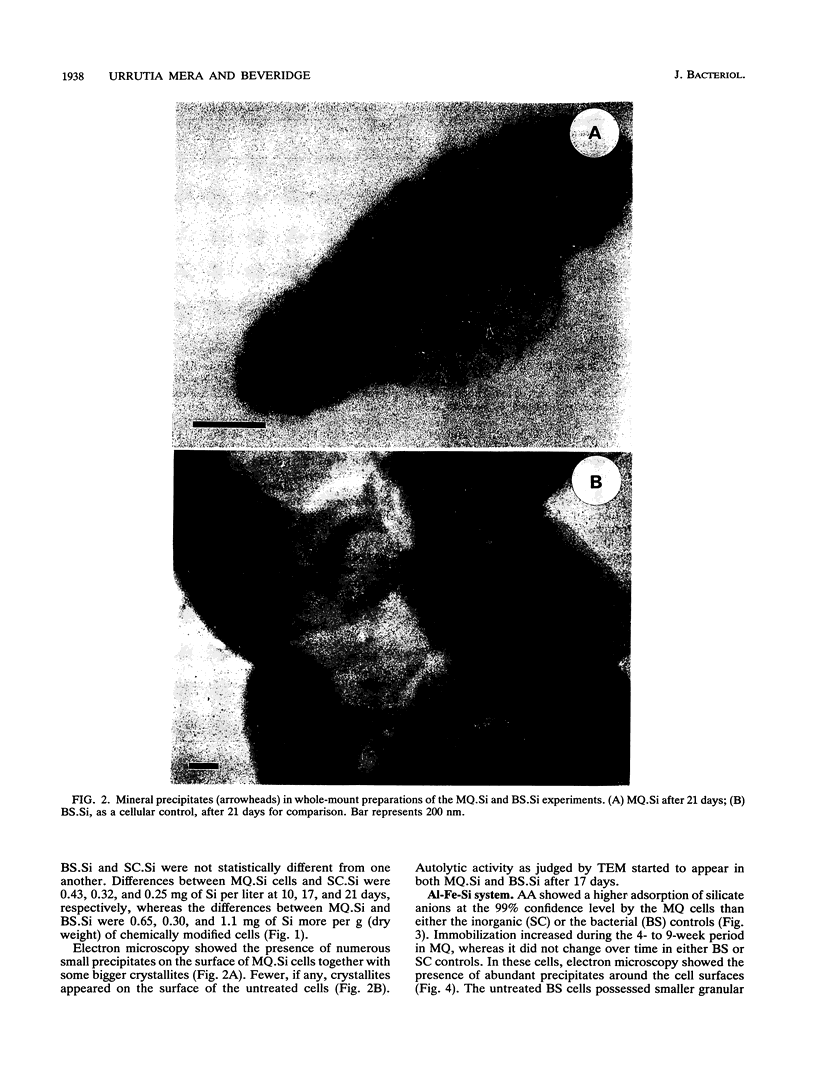
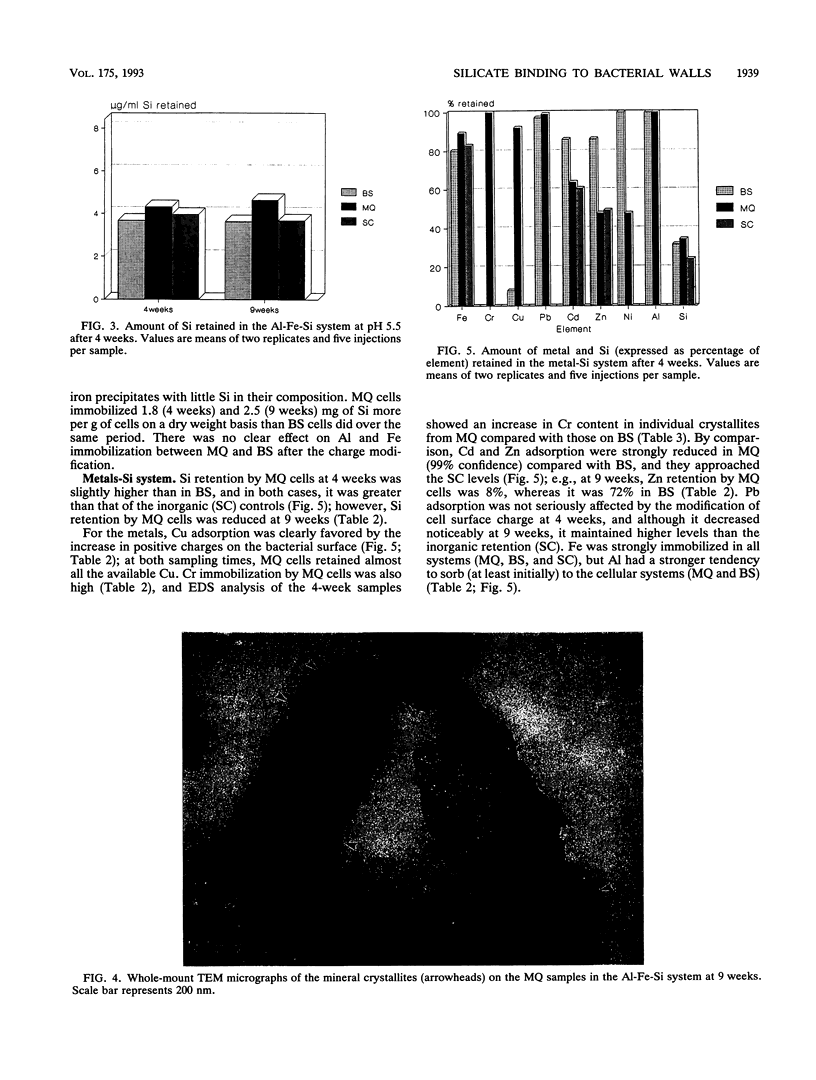
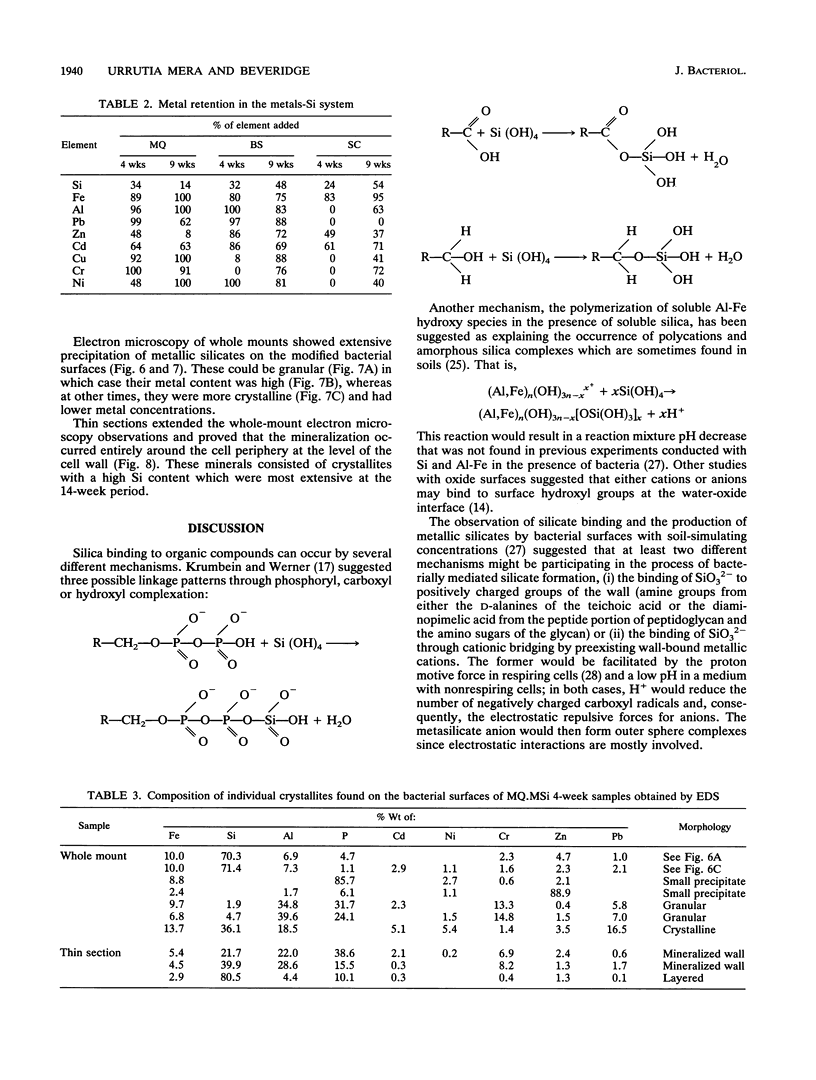
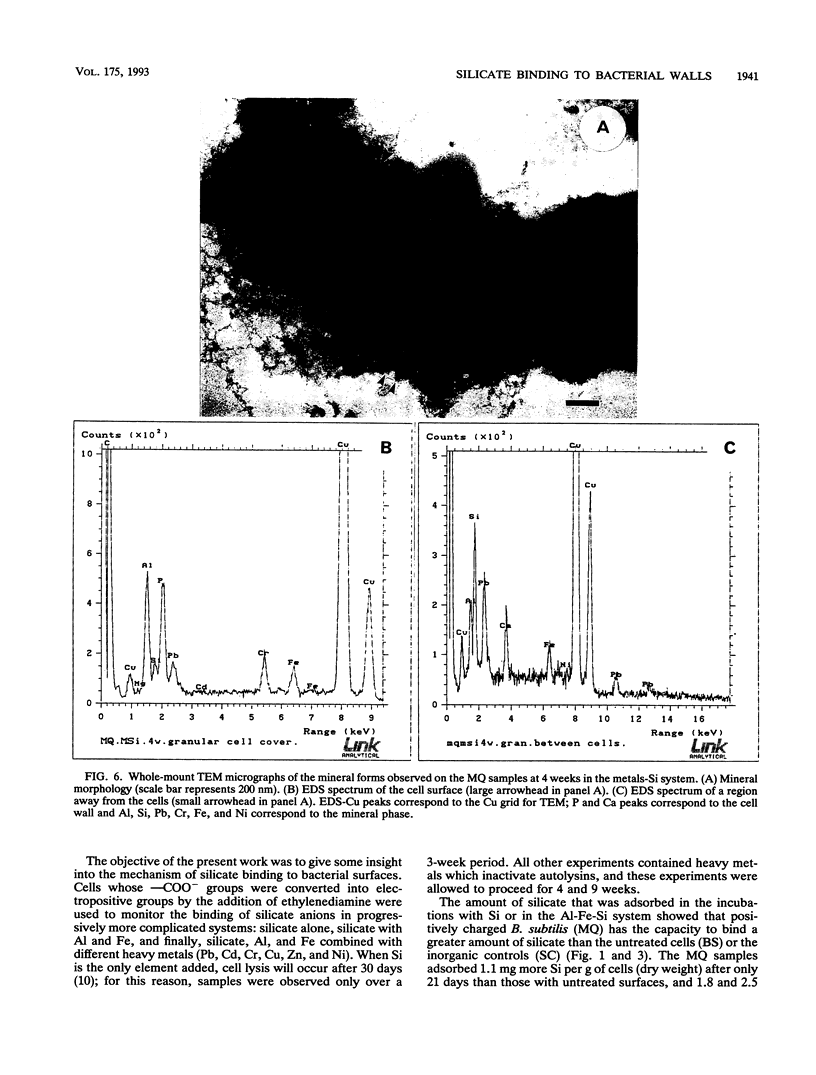
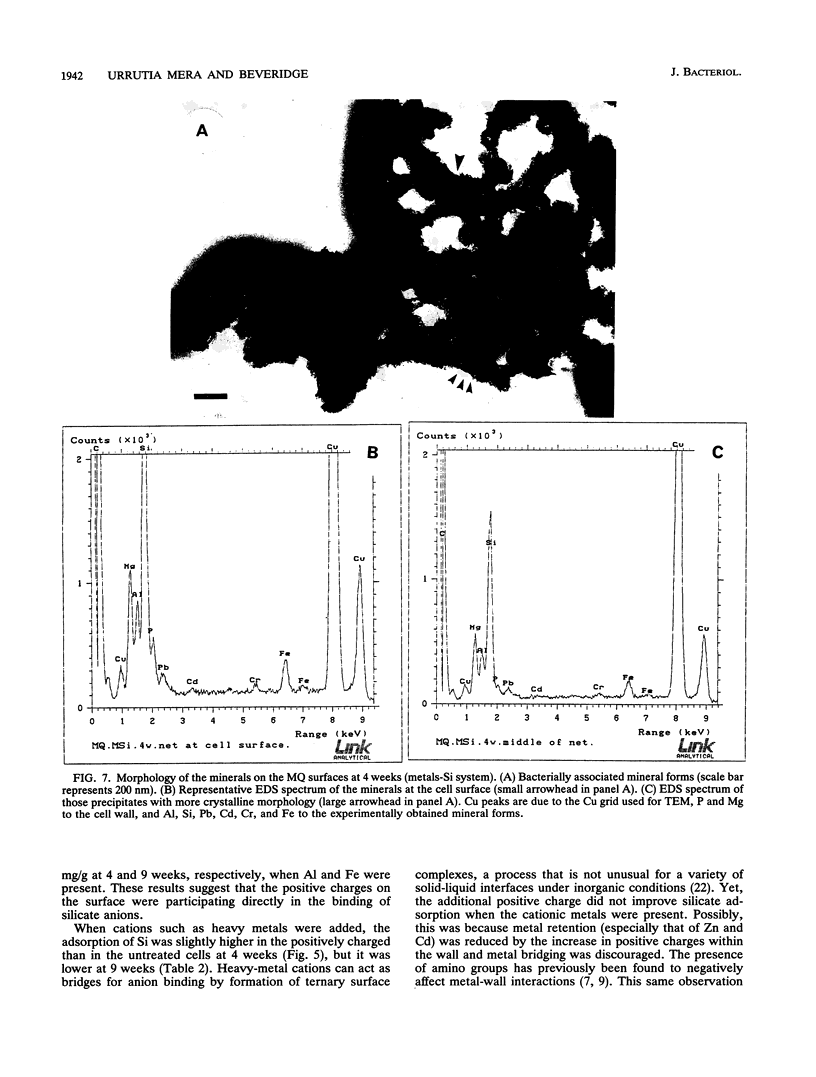
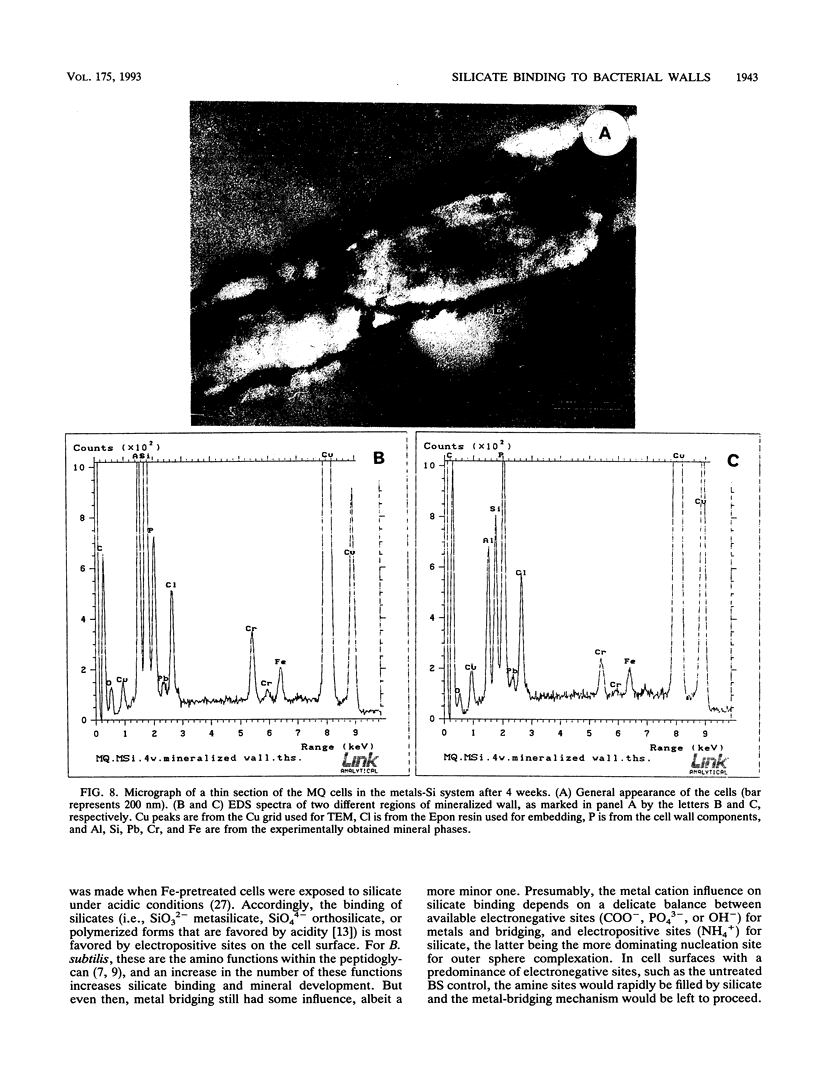
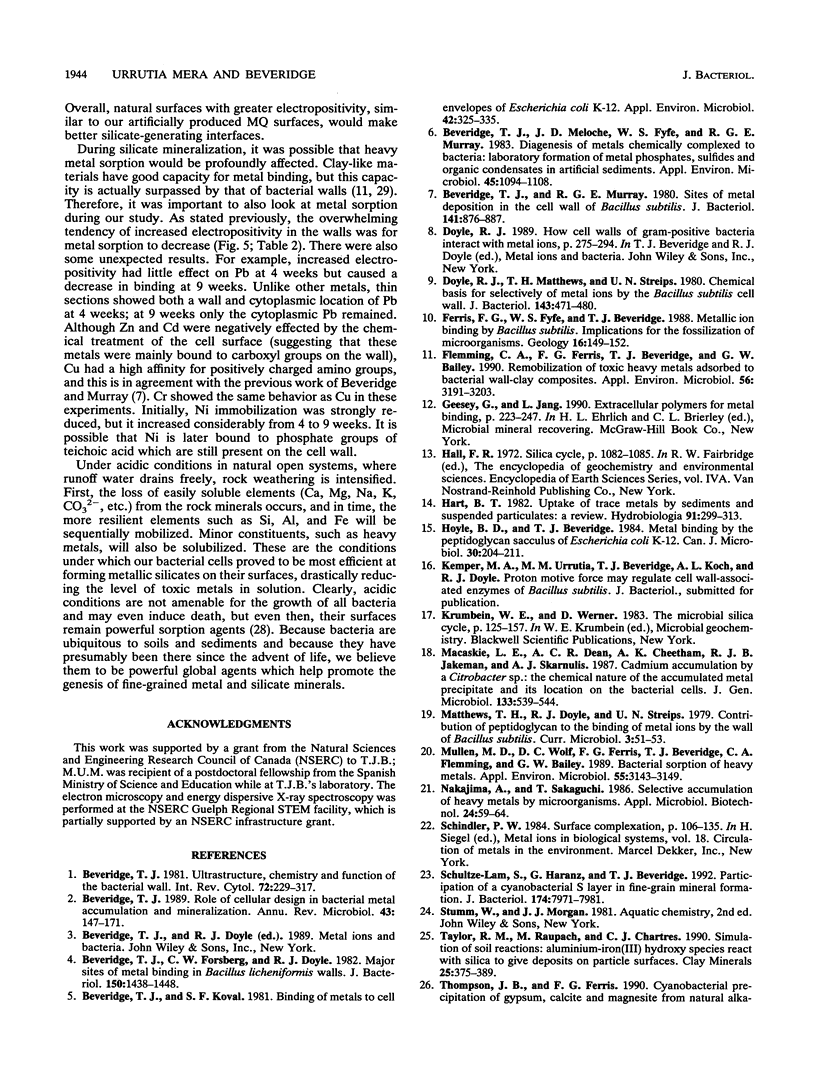

Images in this article
Selected References
These references are in PubMed. This may not be the complete list of references from this article.
- Beveridge T. J., Forsberg C. W., Doyle R. J. Major sites of metal binding in Bacillus licheniformis walls. J Bacteriol. 1982 Jun;150(3):1438–1448. doi: 10.1128/jb.150.3.1438-1448.1982. [DOI] [PMC free article] [PubMed] [Google Scholar]
- Beveridge T. J., Koval S. F. Binding of metals to cell envelopes of Escherichia coli K-12. Appl Environ Microbiol. 1981 Aug;42(2):325–335. doi: 10.1128/aem.42.2.325-335.1981. [DOI] [PMC free article] [PubMed] [Google Scholar]
- Beveridge T. J., Meloche J. D., Fyfe W. S., Murray R. G. Diagenesis of metals chemically complexed to bacteria: laboratory formation of metal phosphates, sulfides, and organic condensates in artificial sediments. Appl Environ Microbiol. 1983 Mar;45(3):1094–1108. doi: 10.1128/aem.45.3.1094-1108.1983. [DOI] [PMC free article] [PubMed] [Google Scholar]
- Beveridge T. J., Murray R. G. Sites of metal deposition in the cell wall of Bacillus subtilis. J Bacteriol. 1980 Feb;141(2):876–887. doi: 10.1128/jb.141.2.876-887.1980. [DOI] [PMC free article] [PubMed] [Google Scholar]
- Beveridge T. J. Role of cellular design in bacterial metal accumulation and mineralization. Annu Rev Microbiol. 1989;43:147–171. doi: 10.1146/annurev.mi.43.100189.001051. [DOI] [PubMed] [Google Scholar]
- Beveridge T. J. Ultrastructure, chemistry, and function of the bacterial wall. Int Rev Cytol. 1981;72:229–317. doi: 10.1016/s0074-7696(08)61198-5. [DOI] [PubMed] [Google Scholar]
- Doyle R. J., Matthews T. H., Streips U. N. Chemical basis for selectivity of metal ions by the Bacillus subtilis cell wall. J Bacteriol. 1980 Jul;143(1):471–480. doi: 10.1128/jb.143.1.471-480.1980. [DOI] [PMC free article] [PubMed] [Google Scholar]
- Flemming C. A., Ferris F. G., Beveridge T. J., Bailey G. W. Remobilization of toxic heavy metals adsorbed to bacterial wall-clay composites. Appl Environ Microbiol. 1990 Oct;56(10):3191–3203. doi: 10.1128/aem.56.10.3191-3203.1990. [DOI] [PMC free article] [PubMed] [Google Scholar]
- Hoyle B. D., Beveridge T. J. Metal binding by the peptidoglycan sacculus of Escherichia coli K-12. Can J Microbiol. 1984 Feb;30(2):204–211. doi: 10.1139/m84-031. [DOI] [PubMed] [Google Scholar]
- Mullen M. D., Wolf D. C., Ferris F. G., Beveridge T. J., Flemming C. A., Bailey G. W. Bacterial sorption of heavy metals. Appl Environ Microbiol. 1989 Dec;55(12):3143–3149. doi: 10.1128/aem.55.12.3143-3149.1989. [DOI] [PMC free article] [PubMed] [Google Scholar]
- Schultze-Lam S., Harauz G., Beveridge T. J. Participation of a cyanobacterial S layer in fine-grain mineral formation. J Bacteriol. 1992 Dec;174(24):7971–7981. doi: 10.1128/jb.174.24.7971-7981.1992. [DOI] [PMC free article] [PubMed] [Google Scholar]
- Urrutia Mera M., Kemper M., Doyle R., Beveridge T. J. The membrane-induced proton motive force influences the metal binding ability of Bacillus subtilis cell walls. Appl Environ Microbiol. 1992 Dec;58(12):3837–3844. doi: 10.1128/aem.58.12.3837-3844.1992. [DOI] [PMC free article] [PubMed] [Google Scholar]
- Walker S. G., Flemming C. A., Ferris F. G., Beveridge T. J., Bailey G. W. Physicochemical interaction of Escherichia coli cell envelopes and Bacillus subtilis cell walls with two clays and ability of the composite to immobilize heavy metals from solution. Appl Environ Microbiol. 1989 Nov;55(11):2976–2984. doi: 10.1128/aem.55.11.2976-2984.1989. [DOI] [PMC free article] [PubMed] [Google Scholar]




